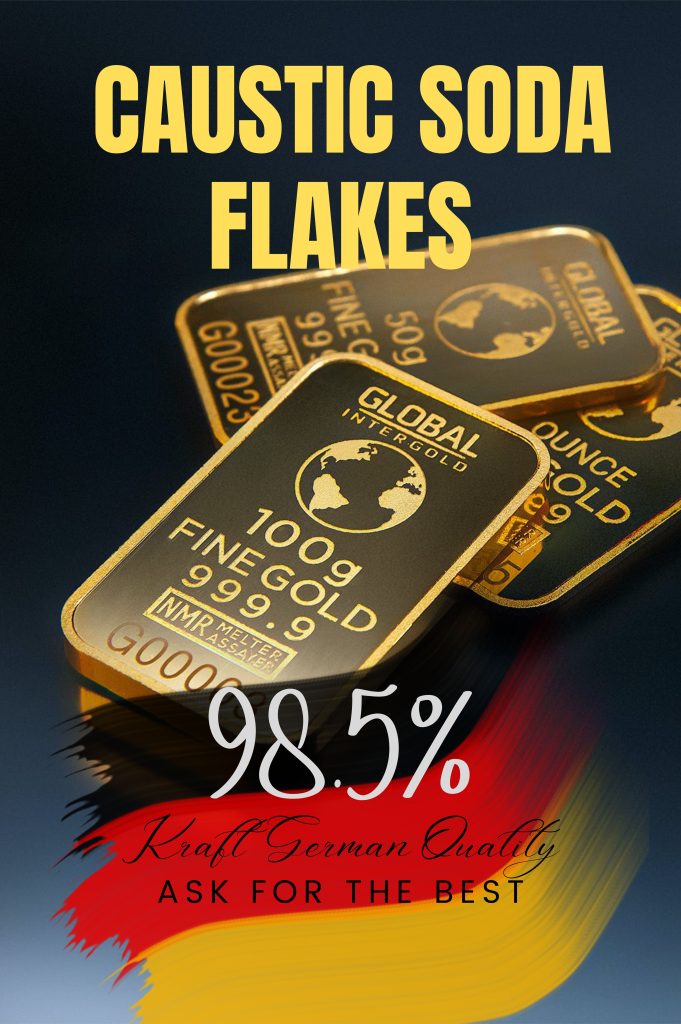THE ROLE OF THIRD-PARTY INSPECTION COMPANIES IN SAFEGUARDING QUALITY
THE ROLE OF THIRD-PARTY INSPECTION COMPANIES IN SAFEGUARDING QUALITY CONTROLS ON CAUSTIC SODA DEALS: A FOCUS ON IRAN
Hossein Moshiri
Introduction:
In the global marketplace, ensuring the quality and conformity of chemical products, such as caustic soda, is paramount for both buyers and sellers. To navigate the complexities of international trade and meet stringent quality standards, third-party inspection companies play a crucial role. This essay explores the significance of third-party inspection in the caustic soda industry, highlighting its role in ensuring quality controls in deals and focusing on Iran’s position in this context.
Importance of Quality Control in Caustic Soda Deals:
Caustic soda, or sodium hydroxide, is a highly versatile chemical used in various industries, including petrochemicals, textiles, and water treatment. Ensuring the quality of caustic soda is essential to maintain the integrity of industrial processes and end-products. Quality control measures encompass aspects such as chemical purity, concentration, and adherence to industry standards.
Complexities of International Trade:
International trade introduces additional complexities to quality control due to varying regulatory frameworks, cultural differences, and logistical challenges. Buyers and sellers involved in caustic soda deals may operate in different countries, each with its own set of standards and expectations. This necessitates a robust mechanism to ensure quality and compliance.
The Role of Third-Party Inspection Companies:
Third-party inspection companies act as impartial entities hired by either the buyer or seller (or sometimes both) to assess and verify the quality of goods being traded. Their role extends beyond merely conducting tests; these companies provide an independent and unbiased evaluation of the product’s adherence to specifications and standards.
Key Functions of Third-Party Inspection Companies:
Quality Testing:
Third-party inspection companies perform comprehensive quality tests on caustic soda, including chemical composition analysis, concentration verification, and assessments of impurities. These tests ensure that the product meets the agreed-upon specifications.
See also Caustic Soda Market in Western Africa and ECOWAS: Opportunities and Challenges for Iran
Compliance Verification:
They verify whether the caustic soda complies with international and local standards, as well as any specific requirements outlined in the trade agreement. This is crucial for meeting regulatory standards in the importing country.
Packaging Inspection:
Beyond the chemical composition, these companies assess the packaging of caustic soda to ensure it meets safety standards and is suitable for transportation and storage, preventing potential hazards.
Logistical Monitoring:
Third-party inspectors monitor the logistics of the caustic soda shipment, from manufacturing to transportation. This includes ensuring proper handling, storage conditions, and adherence to timelines.
Documentation Review:
Inspection companies scrutinize all relevant documentation, such as certificates of analysis, certificates of origin, and shipping documents, to ensure accuracy and compliance with contractual agreements.
Benefits of Third-Party Inspection:
Impartial Evaluation:
Third-party inspection companies offer an impartial evaluation, free from biases that may exist when assessments are conducted by either the buyer or seller. This neutrality enhances the credibility of the inspection process.
Risk Mitigation:
By identifying potential issues early in the process, third-party inspections help mitigate risks associated with product quality, regulatory compliance, and logistical challenges. This proactive approach minimizes the chances of disputes and legal complications.
Enhanced Market Reputation:
Ensuring consistently high-quality products through third-party inspection contributes to a company’s reputation in the market. This is especially important in industries where reliability and product quality are critical factors for success.
Confidence Building:
Both buyers and sellers gain confidence in the reliability of the caustic soda transactions when third-party inspections are conducted. This confidence is vital for fostering long-term business relationships.
Iran’s Position in the Caustic Soda Industry:
Iran is a significant player in the global caustic soda market. With a well-established chemical industry and production capabilities, Iranian caustic soda suppliers cater to both domestic and international markets. As Iran engages in trade partnerships, particularly in the petrochemical sector, the role of third-party inspection becomes increasingly crucial.
Iranian Caustic Soda Exports:
Iran exports caustic soda to various regions, and the demand for Iranian caustic soda is influenced by its quality, pricing, and reliability as a supplier. To maintain and enhance its position in the international market, Iranian caustic soda producers can benefit significantly from third-party inspections.
Importance of Third-Party Inspection for Iranian Exporters:
Global Compliance:
Adhering to international quality standards is essential for Iranian caustic soda exporters to access global markets. Third-party inspections ensure that Iranian products meet the required specifications, enhancing the country’s competitiveness.
Building Trust:
In an international context, building trust with buyers is paramount. Third-party inspections provide an objective assessment, reassuring buyers of the quality and reliability of Iranian caustic soda exports.
Navigating Trade Barriers:
The diversity of markets and regulatory frameworks poses challenges for Iranian exporters. Third-party inspections help navigate these complexities, ensuring that Iranian caustic soda meets the specific requirements of each importing country.
Facilitating Trade Agreements:
Many trade agreements and contracts stipulate the use of third-party inspections. Adhering to these requirements facilitates smoother trade agreements, reducing the likelihood of disputes and creating a conducive environment for business growth.

Conclusion:
In conclusion, the role of third-party inspection companies in safeguarding quality controls on caustic soda deals is pivotal for both buyers and sellers. As Iran continues to be a key player in the global caustic soda market, embracing third-party inspections enhances the credibility of its exports, fosters trust with international partners, and ensures compliance with diverse regulatory frameworks. By prioritizing quality assurance through third-party inspections, Iranian caustic soda producers can solidify their position in the global market and contribute to the sustainable growth of the country’s chemical industry.
Hossein Moshiri
WA +989124311007
Comments
Post a Comment